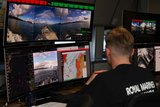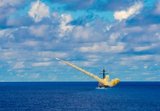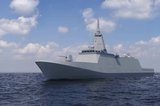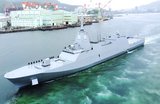Airbus upgrades OceanFinder
Airbus Defence and Space has upgraded its OceanFinder digital maritime service to introduce new features for the detection, identification and tracking of collaborative and non-collaborative vessels around the globe.
OceanFinder combines data collected from optical and radar satellites, real-time global Automatic Identification System (AIS) data and automated analytics to support a broad range of applications across maritime defence and security.
The new updates to the system enable users to benefit from enhanced imagery and AIS data correlation to identify the precise location of a non-responding vessel in near real-time. This development has been combined with new fully-automated detection and classification capabilities in order to determine a vessel’s identity in just a few seconds.
With these updates, analysts are able to focus on providing additional, value-added intelligence, such as interpretation of specific behaviour or threats, without delaying report delivery. New tools have also been incorporated to provide relevant acquisition plan to predict routes and projected locations of vessels, based on last position, date, trajectory and speed.
Several of the new features have been made possible through a multi-year partnership with exactEarth which provides OceanFinder with access to exactView RT – exactEarth’s second-generation real-time satellite-AIS data platform – including all live and archived data.
More from Naval Warfare
-
![NATO tests use of “undetectable, jam-proof” laser communication in maritime scenarios]()
NATO tests use of “undetectable, jam-proof” laser communication in maritime scenarios
As part of its effort to better prepare its capabilities for operations in contested and congested scenarios, NATO evaluated a Lithuanian ship-to-ship terminal designed to not be susceptible to enemy interference.
-
![US Navy advances with the Harpoon Service Life Extension Programme]()
US Navy advances with the Harpoon Service Life Extension Programme
The US Navy plans to improve Harpoon’s anti-ship and land attack capabilities by equipping the missiles with sensors and technologies required for succeeding in future battlespace.
-
![Mitsubishi eyes future with Australia’s Mogami selection]()
Mitsubishi eyes future with Australia’s Mogami selection
With Australia’s selection of the Mogami-class for Project Sea 3000, Mitsubishi is investigating local production in the next decade as potential export opportunities emerge.
-
![Thales’ new Sonar 76Nano could equip UK Royal Navy on anti-submarine warfare missions]()
Thales’ new Sonar 76Nano could equip UK Royal Navy on anti-submarine warfare missions
The new sonar is designed to equip uncrewed underwater vessels, with the potential to be used by the Royal Navy for its Atlantic Bastion and Atlantic Net missions.
-
![Hanwha wins Australian government approval to increase its stake in Austal]()
Hanwha wins Australian government approval to increase its stake in Austal
The contract would mean the two shipbuilders can collaborate strategically and enhance shipbuilding capabilities in Western Australia.























